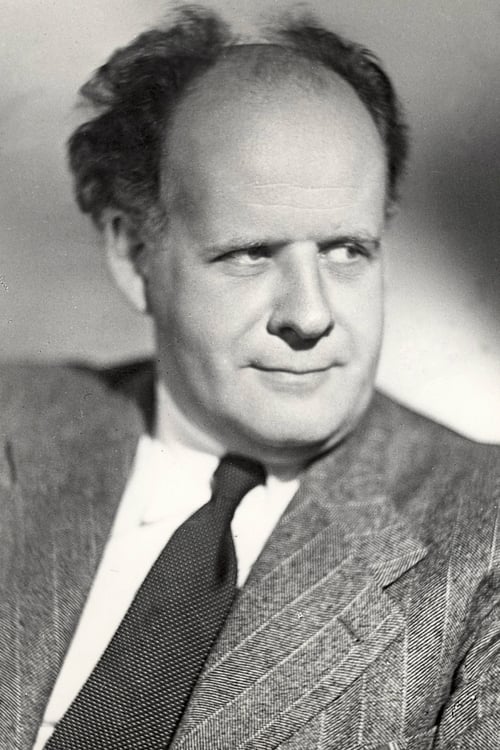
As a teenager, Sergei Eisenstein signed his drawings with "Sir Gay". Mark Rappaport sees clear signs of his sexual preferences throughout the Russian’s film oeuvre. Numerous asides illustrate how Hollywood productions likewise frequently played with nods and winks and typical motifs from gay culture.

The true story of Mei Lanfang, China's greatest opera star; a husband and father whose world-wide fame came from the portrayal of women. His fascinating life was the basis for the feature film Farewell My Concubine.

Eisenstein is celebrated either as the last Leonardo da Vinci of modernity or attacked as Faustus, Faustus who made a pact with the devil. Whichever is the case, neither friends nor foes are able to resist the powerful draw of Eisenstein's work. He was a person of complexity who was understood in very different ways, as a generous cosmopolitan and a stingy hermit, a cynic and yet a highly sensitive, vulnerable being. The film deals with a number of phases in Eisenstein's life, and tries to get away from the orthodox image of him by using new material to shed a different light on his biography.

Director
Eisenstein shot 50 hours of footage on location in Mexico in 1931 and 32 for what would have become ¡Que viva México!, but was not able to finish the film. Following two wildly different reconstruction attempts in 1939 (Marie Seton's 'Time in the Sun') and 1979 (Grigori Alexandrov's '¡Que viva México!') Kovalov has here compiled another hypothetical version of what Eisenstein's film might have been.

Writer
Eisenstein shot 50 hours of footage on location in Mexico in 1931 and 32 for what would have become ¡Que viva México!, but was not able to finish the film. Following two wildly different reconstruction attempts in 1939 (Marie Seton's 'Time in the Sun') and 1979 (Grigori Alexandrov's '¡Que viva México!') Kovalov has here compiled another hypothetical version of what Eisenstein's film might have been.

Himself
Eisenstein shot 50 hours of footage on location in Mexico in 1931 and 32 for what would have become ¡Que viva México!, but was not able to finish the film. Following two wildly different reconstruction attempts in 1939 (Marie Seton's 'Time in the Sun') and 1979 (Grigori Alexandrov's '¡Que viva México!') Kovalov has here compiled another hypothetical version of what Eisenstein's film might have been.

A free film adaptation of the director's memoirs. In form, this is the "stream of consciousness" that attracted Sergei Eisenstein after getting acquainted with the experiments of James Joyce. The outer outline of the film is a long foreign trip of the director, which began in 1929, during which he recalls his past life and considers creative ideas. The film is constructed as a free alternation of reality, dreams, and fantasies. The material for it is fragments from the films of Sergei Eisenstein and his fellow contemporaries, documentary footage depicting the director and his time. The wide coverage of the faces and events reflected in the film shows the special role of Sergei Eisenstein in the culture of the twentieth century…

The Island of the Dead is a film about the demise of the Russian Epocha Modern. The symbol of this culture was the legendary Russian film star Vera Kholodnaya, who evoked a poetic image of the young urban woman on the silver screen. Her death in 1919, shrouded in tragedy and mystery, put a symbolic end to the pre-Revolutionary period. The Island of the Dead is composed of fragments from numerous films from this period, juxtaposed with other contemporary artistic expressions such as music and painting. Kovalov shows convincingly how the fragile beauty of the Russian Epocha Modern had to make way for the pressure of Futurism, Constructivism and other 'progressive trends', and how these '-isms' were then also relegated to the melting pot to be remoulded by totalitarian norms.

Director
Begun in 1946, production was halted when the decision was made not to release the second film. After Eisenstein's death in 1948, all footage from the film was confiscated, but a 5 minute fragment exist.

Inspired by the social changes that the Revolution brought to our country and the admiration he felt for Mexican art, the Russian filmmaker Sergei M. Eisenstein traveled to Mexico with the intention of filming a film mosaic that culminated in the most beautiful non-existent film. The details of this odyssey are exposed in this episode of the classic television series Those Who Made Our Cinema.
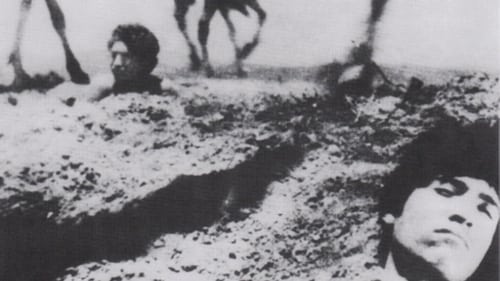
Director
Que viva México! foi um projeto de filme realizado em 1931-32 pelo cineasta soviético Sergei Eisenstein para o autor socialista americano Upton Sinclair e vários investidores, que Eisenstein acabou concebendo como um retrato episódico da cultura e política mexicanas desde a civilização pré-conquista até a revolução mexicana. Mais de 200.000 pés de filme mudo foram filmados antes que a produção tivesse que ser interrompida devido ao esgotamento das finanças e às exigências de Stalin de que Eisenstein retornasse à URSS. Esta é uma das várias tentativas de fazer um longa-metragem a partir das imagens existentes, aqui de acordo com o esboço esquelético de Eisenstein e sob a supervisão de Gregori Alexandrov, colaborador de longa data de Eisenstein, inclusive neste projeto.

Screenplay
Que viva México! foi um projeto de filme realizado em 1931-32 pelo cineasta soviético Sergei Eisenstein para o autor socialista americano Upton Sinclair e vários investidores, que Eisenstein acabou concebendo como um retrato episódico da cultura e política mexicanas desde a civilização pré-conquista até a revolução mexicana. Mais de 200.000 pés de filme mudo foram filmados antes que a produção tivesse que ser interrompida devido ao esgotamento das finanças e às exigências de Stalin de que Eisenstein retornasse à URSS. Esta é uma das várias tentativas de fazer um longa-metragem a partir das imagens existentes, aqui de acordo com o esboço esquelético de Eisenstein e sob a supervisão de Gregori Alexandrov, colaborador de longa data de Eisenstein, inclusive neste projeto.

Writer
Bezhin Lug (Bezhin Meadow) was to be a Soviet film about a young farm boy whose father attempts to betray the government for political reasons by sabotaging the year's harvest, and the son's efforts to stop his own father to protect the Soviet state, culminating in the boy's murder and a social uprising. Assigned to Soviet film-maker Sergei Eisenstein, the filming followed the same path as with his previous effort, "Que Viva Mexico", into cost overrun and over-shooting of footage. Furthermore, Eisenstein's usage of forbidden experimental film techniques outraged his government superiors, who ordered the film destroyed before it was even completed. All that survives are the first and last frames of each shot, preserved by Sergei Eisenstein’s wife, Pera Atasheva. The 1967 reconstruction, by Naum Kleiman of the Eisenstein Museum and Sergei Yutkevich of Gosfilmofond, places these frames in order, approximating the original film.

Director
Bezhin Lug (Bezhin Meadow) was to be a Soviet film about a young farm boy whose father attempts to betray the government for political reasons by sabotaging the year's harvest, and the son's efforts to stop his own father to protect the Soviet state, culminating in the boy's murder and a social uprising. Assigned to Soviet film-maker Sergei Eisenstein, the filming followed the same path as with his previous effort, "Que Viva Mexico", into cost overrun and over-shooting of footage. Furthermore, Eisenstein's usage of forbidden experimental film techniques outraged his government superiors, who ordered the film destroyed before it was even completed. All that survives are the first and last frames of each shot, preserved by Sergei Eisenstein’s wife, Pera Atasheva. The 1967 reconstruction, by Naum Kleiman of the Eisenstein Museum and Sergei Yutkevich of Gosfilmofond, places these frames in order, approximating the original film.
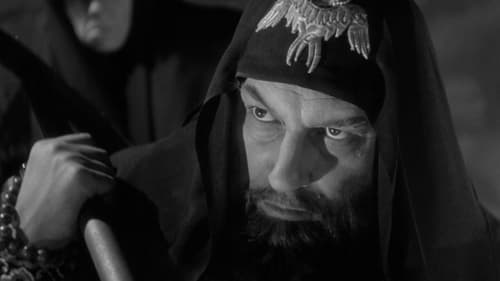
Production Design
This is the second part of a projected three-part epic biopic of Russian Czar Ivan Grozny, undertaken by Soviet film-maker Sergei Eisenstein at the behest of Josef Stalin. Production of the epic was stopped before the third part could be filmed, due to producer dissatisfaction with Eisenstein's introducing forbidden experimental filming techniques into the material, more evident in this part than the first part. As it was, this second part was banned from showings until after the deaths of both Eisenstein and Stalin, and a change of attitude by the subsequent heads of the Soviet government. In this part, as Ivan the Terrible attempts to consolidate his power by establishing a personal army, his political rivals, the Russian boyars, plot to assassinate him.

Producer
This is the second part of a projected three-part epic biopic of Russian Czar Ivan Grozny, undertaken by Soviet film-maker Sergei Eisenstein at the behest of Josef Stalin. Production of the epic was stopped before the third part could be filmed, due to producer dissatisfaction with Eisenstein's introducing forbidden experimental filming techniques into the material, more evident in this part than the first part. As it was, this second part was banned from showings until after the deaths of both Eisenstein and Stalin, and a change of attitude by the subsequent heads of the Soviet government. In this part, as Ivan the Terrible attempts to consolidate his power by establishing a personal army, his political rivals, the Russian boyars, plot to assassinate him.

Director
This is the second part of a projected three-part epic biopic of Russian Czar Ivan Grozny, undertaken by Soviet film-maker Sergei Eisenstein at the behest of Josef Stalin. Production of the epic was stopped before the third part could be filmed, due to producer dissatisfaction with Eisenstein's introducing forbidden experimental filming techniques into the material, more evident in this part than the first part. As it was, this second part was banned from showings until after the deaths of both Eisenstein and Stalin, and a change of attitude by the subsequent heads of the Soviet government. In this part, as Ivan the Terrible attempts to consolidate his power by establishing a personal army, his political rivals, the Russian boyars, plot to assassinate him.

Writer
This is the second part of a projected three-part epic biopic of Russian Czar Ivan Grozny, undertaken by Soviet film-maker Sergei Eisenstein at the behest of Josef Stalin. Production of the epic was stopped before the third part could be filmed, due to producer dissatisfaction with Eisenstein's introducing forbidden experimental filming techniques into the material, more evident in this part than the first part. As it was, this second part was banned from showings until after the deaths of both Eisenstein and Stalin, and a change of attitude by the subsequent heads of the Soviet government. In this part, as Ivan the Terrible attempts to consolidate his power by establishing a personal army, his political rivals, the Russian boyars, plot to assassinate him.

Himself (archive footage)
A USSR documentary about the filmmaker Sergei Eisenstein

Director
"Eisenstein journeyed to Mexico in late 1930 to begin shooting a film. With backing provided by Upton and Mary Craig Sinclair, the great Soviet auteur planned to make an epoch-spanning pageant of Mexico’s political history and cultural iconography, moving from the pre-Columbian era through colonization and, finally, revolution ... with the project running over budget the film was shut down. Sinclair eventually deposited the film materials at MoMA in 1953, at which point the scholar Jay Leyda assembled and annotated the shots, ordering them according to the filmmaker’s plans and presenting the images just as they had been shot, unedited ... here one is given the opportunity to attend to Eisenstein in an entirely different way, and aspects that might otherwise be overshadowed come to the fore: the way he works with nonprofessional actors, for example, or the striking mise-en-scène." - MoMA
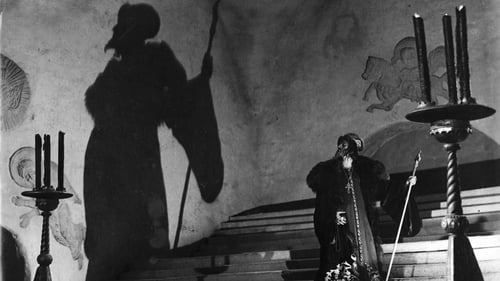
Art Direction
Durante a primeira parte do seu reinado, Ivan, o Terrível, enfrenta traição da aristocracia e até dos seus amigos mais próximos, à medida que procura unir o povo russo.

Editor
Durante a primeira parte do seu reinado, Ivan, o Terrível, enfrenta traição da aristocracia e até dos seus amigos mais próximos, à medida que procura unir o povo russo.

Producer
Durante a primeira parte do seu reinado, Ivan, o Terrível, enfrenta traição da aristocracia e até dos seus amigos mais próximos, à medida que procura unir o povo russo.

Director
Durante a primeira parte do seu reinado, Ivan, o Terrível, enfrenta traição da aristocracia e até dos seus amigos mais próximos, à medida que procura unir o povo russo.

Writer
Durante a primeira parte do seu reinado, Ivan, o Terrível, enfrenta traição da aristocracia e até dos seus amigos mais próximos, à medida que procura unir o povo russo.

Writer
Archive footage from Potemkin (1925), with English dialogue dubbed in by American actors, is combined with new footage to tie together the brave stand of Odessa Russian guerrilla bands of the 1940's against German forces with the similar situation of 1905 when Odessa citizens aided in the revolt against the Czar as depicted in Eisenstein's classic Potemkin (1925).

Director
Archive footage from Potemkin (1925), with English dialogue dubbed in by American actors, is combined with new footage to tie together the brave stand of Odessa Russian guerrilla bands of the 1940's against German forces with the similar situation of 1905 when Odessa citizens aided in the revolt against the Czar as depicted in Eisenstein's classic Potemkin (1925).

In 1941, a group of the Soviet Union's most prominent Jewish writers and artists, including Solomon Mikhoels, Peretz Markish, and Sergei Eisenstein, signed an appeal to Jews throughout the world, asking them to join the Soviet people in fighting against fascism.

Idea
Second attempt to create a feature film out of the 200,000-plus feet of film which Soviet film-maker Sergei Eisenstein shot during 1931-32 in Mexico for American socialist author Upton Sinclair, his wife and a small company of investors. The projected film, to be called "Que Viva Mexico", was never completed due to exhaustion of funds and Stalin's demand that Eisenstein return to the USSR (he had been absent since 1929). The first attempt at editing the footage, in the USA, resulted in "Thunder Over Mexico", released in 1934. In 1940, Marie Seton, from the UK, acquired some of the footage from the Sinclairs in an attempt to make a better cutting according to Eisenstein's skeletal outline for the proposed film. This film has apparently been lost.

Director
Second attempt to create a feature film out of the 200,000-plus feet of film which Soviet film-maker Sergei Eisenstein shot during 1931-32 in Mexico for American socialist author Upton Sinclair, his wife and a small company of investors. The projected film, to be called "Que Viva Mexico", was never completed due to exhaustion of funds and Stalin's demand that Eisenstein return to the USSR (he had been absent since 1929). The first attempt at editing the footage, in the USA, resulted in "Thunder Over Mexico", released in 1934. In 1940, Marie Seton, from the UK, acquired some of the footage from the Sinclairs in an attempt to make a better cutting according to Eisenstein's skeletal outline for the proposed film. This film has apparently been lost.

(archive footage)
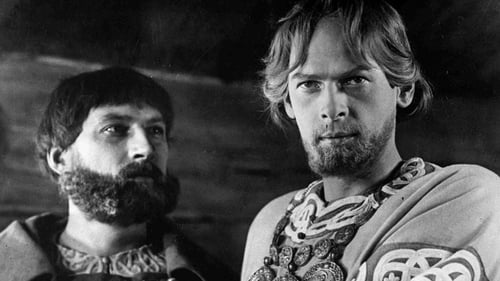
Writer
A história de como um grande príncipe russo levou um exército maltrapilho para combater uma força invasora de cavaleiros teutônicos. É o século XIII, e a Rússia é tomada por invasores estrangeiros. Um knyaz' russo (um príncipe russo), Alexander Nevsky, junta o povo para formar um exército maltrapilho para combater uma invasão de cavaleiros teutônicos. Esta é uma história verdadeira baseada na batalha ocorrida num lago perto de Novgorod.

Editor
A história de como um grande príncipe russo levou um exército maltrapilho para combater uma força invasora de cavaleiros teutônicos. É o século XIII, e a Rússia é tomada por invasores estrangeiros. Um knyaz' russo (um príncipe russo), Alexander Nevsky, junta o povo para formar um exército maltrapilho para combater uma invasão de cavaleiros teutônicos. Esta é uma história verdadeira baseada na batalha ocorrida num lago perto de Novgorod.

Director
A história de como um grande príncipe russo levou um exército maltrapilho para combater uma força invasora de cavaleiros teutônicos. É o século XIII, e a Rússia é tomada por invasores estrangeiros. Um knyaz' russo (um príncipe russo), Alexander Nevsky, junta o povo para formar um exército maltrapilho para combater uma invasão de cavaleiros teutônicos. Esta é uma história verdadeira baseada na batalha ocorrida num lago perto de Novgorod.

Director
Durante sua aventura no México, Sergei Eisenstein fez filmagens de uma celebração mexicana do "Dia da Morte" para inclusão em seu "Que Viva México!" projeto de filme. Quando os mais de 200.000 pés de filme que ele eventualmente expôs no México foram tentados pela primeira vez a serem transformados em um longa-metragem, "Thunder Over Mexico", os produtores excluíram o material do Death Day para posterior compilação como um curta independente. Silencioso com faixa de música e intertítulos explicativos em inglês.

Director
The story of Russian director Sergei M. Eisenstein in Mexico trying to film his unfinished ¡Que Viva Mexico! - Da zdravstvuyet Meksika! (1979).

Director
As was common in Diaz's Mexico, a young hacienda worker finds his betrothed imprisoned and his life threatened by his master for confronting a hacienda guest for raping the girl. This film is the first of several attempts to make a feature-length motion picture out of the 200,000-plus feet of film shot by Sergei Eisenstein, on photographic expedition in Mexico during 1931-32 for Upton Sinclair and a cadre of private American producer-investors. Silent with music and English intertitles.

Director
Unedited film that Sergei Eisenstein, Grigoriy Aleksandrov and Eduard Tisse shot in Mexico 1931-32. This record only represents the 200,000-plus feet of unedited film that Sergei Eisenstein, Grigoriy Aleksandrov and Eduard Tisse shot in Mexico 1931/32 for Mary and Upton Sinclair and three American co-financiers. It was Eisenstein's vision to end up with movie about Mexico in six parts called "Calavera", "Sandunga", "Maguey", "Fiesta", "Soldadera", and "Epilogue". The project was canceled before it was completed due to cost overruns and months-delayed completion, and the producers refused to let Eisenstein attempt to edit anything from the material he had finished after Iosif Stalin called him back to the USSR. From this footage the following pictures were subsequently edited by other hands: Thunder Over Mexico (1933), Eisenstein in Mexico (1933), Death Day (1934), Time in the Sun (1940), and Que Viva Mexico (1979).

Self (uncredited)
A German reporter visits Hollywood and is escorted through the MGM Studio by a German nobleman, who is working there as an extra. They meet and speak to several actors, primarily Buster Keaton, John Gilbert, Joan Crawford and Heinrich George. Then they meet Adolphe Menjou, who rehearses a long scene in German. A final scene shows stars arriving at a film premiere, including Jean Harlow, Norma Shearer and Wallace Beery.

Writer
Footage of the aftermath of the January 14 1931 earthquake in Oaxaca, Mexico.

Director
Footage of the aftermath of the January 14 1931 earthquake in Oaxaca, Mexico.

Editor
Romance sentimentale is a 1930 French film directed by Grigori Aleksandrov and Sergei M. Eisenstein. A short, experimental, slightly poetic montage of city and abstract images.

Screenplay
Romance sentimentale is a 1930 French film directed by Grigori Aleksandrov and Sergei M. Eisenstein. A short, experimental, slightly poetic montage of city and abstract images.

Director
Romance sentimentale is a 1930 French film directed by Grigori Aleksandrov and Sergei M. Eisenstein. A short, experimental, slightly poetic montage of city and abstract images.

Director
This film shows contrasting views of women with problematic pregnancies and the outcomes resulting when they seek out a back-alley abortionist, a trained and licensed abortion provider in a clinic, or an obstetrician capable of performing a Caesarian Section. The full film appears to be lost, but shortened versions, including one with dialogue scenes added in Germany in 1935, can be found on the internet. Additionally, Eisenstein's role in making the picture remains unclear: did he direct some or all of it, just edit it, or merely leave it to Alexandrov and Tisse to make? Released in the USA 1930 in a 65 minute (5800 ft.) version with English intertitles and a music track under the title BIRTH.

Supervisor of Production Resources
This film shows contrasting views of women with problematic pregnancies and the outcomes resulting when they seek out a back-alley abortionist, a trained and licensed abortion provider in a clinic, or an obstetrician capable of performing a Caesarian Section. The full film appears to be lost, but shortened versions, including one with dialogue scenes added in Germany in 1935, can be found on the internet. Additionally, Eisenstein's role in making the picture remains unclear: did he direct some or all of it, just edit it, or merely leave it to Alexandrov and Tisse to make? Released in the USA 1930 in a 65 minute (5800 ft.) version with English intertitles and a music track under the title BIRTH.

Editor
This film shows contrasting views of women with problematic pregnancies and the outcomes resulting when they seek out a back-alley abortionist, a trained and licensed abortion provider in a clinic, or an obstetrician capable of performing a Caesarian Section. The full film appears to be lost, but shortened versions, including one with dialogue scenes added in Germany in 1935, can be found on the internet. Additionally, Eisenstein's role in making the picture remains unclear: did he direct some or all of it, just edit it, or merely leave it to Alexandrov and Tisse to make? Released in the USA 1930 in a 65 minute (5800 ft.) version with English intertitles and a music track under the title BIRTH.
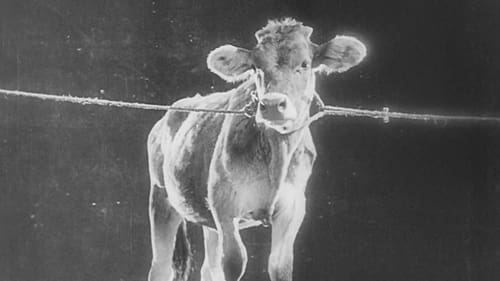
Scenario Writer
Uma mulher em uma cidade rural lida com as novas formas de comunismo

Director
Uma mulher em uma cidade rural lida com as novas formas de comunismo

Policeman
Experimental documentary focusing on a day in the life of city workers, featuring montage sequences and repetition to emphasise the monotony of routine office work.

Screenplay
A farcical war between the forces of Commercial Cinema and Independent Cinema.

Commander of the Army of Independents
A farcical war between the forces of Commercial Cinema and Independent Cinema.

Director
A farcical war between the forces of Commercial Cinema and Independent Cinema.
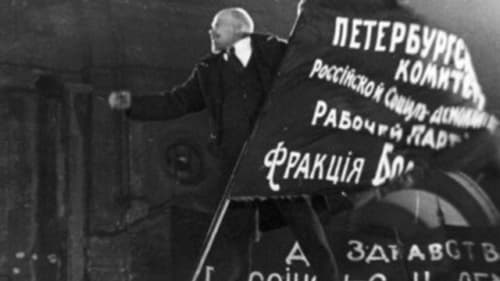
Director
Em tom de documentário, o filme recria acontecimentos em Petrogrado, na Rússia, desde o fim da monarquia, em fevereiro de 1917, até o fim do governo provisório em novembro do mesmo ano.

Screenplay
Em tom de documentário, o filme recria acontecimentos em Petrogrado, na Rússia, desde o fim da monarquia, em fevereiro de 1917, até o fim do governo provisório em novembro do mesmo ano.
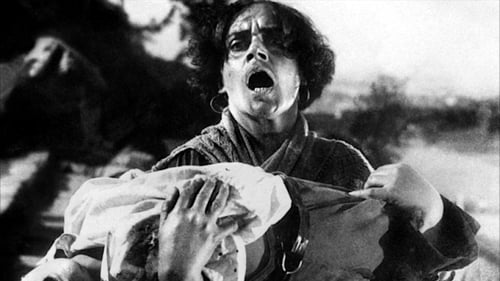
Writer
Em 1905, na Rússia czarista, aconteceu um levante que pressagiou a Revolução de 1917. Tudo começou no navio de guerra Potemkin quando os marinheiros estavam cansados de serem maltratados, sendo que até carne estragada lhes era dada com o médico de bordo insistindo que ela era perfeitamente comestível. Alguns marinheiros se recusam em comer esta carne, então os oficiais do navio ordenam a execução deles. A tensão aumenta e, gradativamente, a situação sai cada vez mais do controle. Logo depois dos gatilhos serem apertados Vakulinchuk (Aleksandr Antonov), um marinheiro, grita para os soldados e pede para eles pensarem e decidirem se estão com os oficiais ou com os marinheiros. Os soldados hesitam e então abaixam suas armas. Louco de ódio, um oficial tenta agarrar um dos rifles e provoca uma revolta no navio, na qual o marinheiro é morto. Mas isto seria apenas o início de uma grande tragédia.

Odessa Citizen
Em 1905, na Rússia czarista, aconteceu um levante que pressagiou a Revolução de 1917. Tudo começou no navio de guerra Potemkin quando os marinheiros estavam cansados de serem maltratados, sendo que até carne estragada lhes era dada com o médico de bordo insistindo que ela era perfeitamente comestível. Alguns marinheiros se recusam em comer esta carne, então os oficiais do navio ordenam a execução deles. A tensão aumenta e, gradativamente, a situação sai cada vez mais do controle. Logo depois dos gatilhos serem apertados Vakulinchuk (Aleksandr Antonov), um marinheiro, grita para os soldados e pede para eles pensarem e decidirem se estão com os oficiais ou com os marinheiros. Os soldados hesitam e então abaixam suas armas. Louco de ódio, um oficial tenta agarrar um dos rifles e provoca uma revolta no navio, na qual o marinheiro é morto. Mas isto seria apenas o início de uma grande tragédia.

Editor
Em 1905, na Rússia czarista, aconteceu um levante que pressagiou a Revolução de 1917. Tudo começou no navio de guerra Potemkin quando os marinheiros estavam cansados de serem maltratados, sendo que até carne estragada lhes era dada com o médico de bordo insistindo que ela era perfeitamente comestível. Alguns marinheiros se recusam em comer esta carne, então os oficiais do navio ordenam a execução deles. A tensão aumenta e, gradativamente, a situação sai cada vez mais do controle. Logo depois dos gatilhos serem apertados Vakulinchuk (Aleksandr Antonov), um marinheiro, grita para os soldados e pede para eles pensarem e decidirem se estão com os oficiais ou com os marinheiros. Os soldados hesitam e então abaixam suas armas. Louco de ódio, um oficial tenta agarrar um dos rifles e provoca uma revolta no navio, na qual o marinheiro é morto. Mas isto seria apenas o início de uma grande tragédia.

Director
Em 1905, na Rússia czarista, aconteceu um levante que pressagiou a Revolução de 1917. Tudo começou no navio de guerra Potemkin quando os marinheiros estavam cansados de serem maltratados, sendo que até carne estragada lhes era dada com o médico de bordo insistindo que ela era perfeitamente comestível. Alguns marinheiros se recusam em comer esta carne, então os oficiais do navio ordenam a execução deles. A tensão aumenta e, gradativamente, a situação sai cada vez mais do controle. Logo depois dos gatilhos serem apertados Vakulinchuk (Aleksandr Antonov), um marinheiro, grita para os soldados e pede para eles pensarem e decidirem se estão com os oficiais ou com os marinheiros. Os soldados hesitam e então abaixam suas armas. Louco de ódio, um oficial tenta agarrar um dos rifles e provoca uma revolta no navio, na qual o marinheiro é morto. Mas isto seria apenas o início de uma grande tragédia.
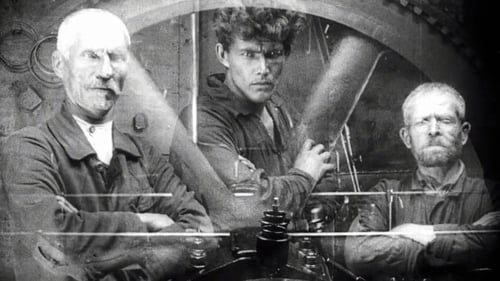
Editor
O suicídio de um operário injustamente acusado de roubo é o estopim para o início de uma greve numa fábrica russa, em 1912. O lento processo de negociação expõe uma série de ações e contra-ações entre grevistas e polícia.

Screenplay
O suicídio de um operário injustamente acusado de roubo é o estopim para o início de uma greve numa fábrica russa, em 1912. O lento processo de negociação expõe uma série de ações e contra-ações entre grevistas e polícia.

Director
O suicídio de um operário injustamente acusado de roubo é o estopim para o início de uma greve numa fábrica russa, em 1912. O lento processo de negociação expõe uma série de ações e contra-ações entre grevistas e polícia.
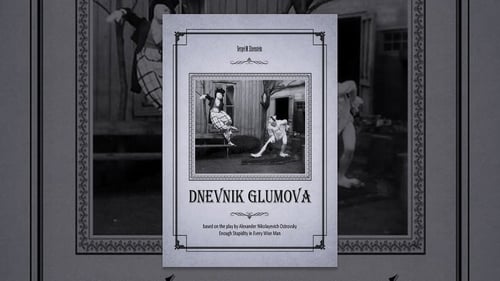
Himself (takes bow at end)
Inserção fílmica para a adaptação livre e modernizada de Eisenstein da peça de teatro russa do século XIX de Ostrovskiy, "The Wise Man" ("Na vsyakogo mudretsa dovolno prostoty"). O anti-herói Glumov tenta escapar da exposição em meio a acrobacias, ousadia e palhaçadas farsas. Vários membros da trupe de Eisenstein no lendário teatro "Proletkult" em Moscou aparecem brevemente neste pequeno filme.

Director
Inserção fílmica para a adaptação livre e modernizada de Eisenstein da peça de teatro russa do século XIX de Ostrovskiy, "The Wise Man" ("Na vsyakogo mudretsa dovolno prostoty"). O anti-herói Glumov tenta escapar da exposição em meio a acrobacias, ousadia e palhaçadas farsas. Vários membros da trupe de Eisenstein no lendário teatro "Proletkult" em Moscou aparecem brevemente neste pequeno filme.
